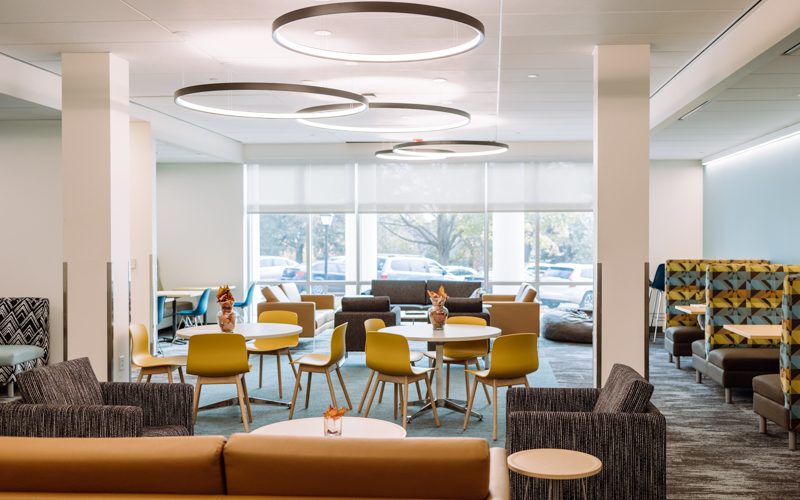November 1, 2023
The newly redesigned space now serves as a permanent home for the Department of Modern and Classical Languages, including faculty offices and classrooms.

This fall, the doors of McAlister Hall opened to students once again. Constructed in 1962, the building was left unused after the Conservatory of Music made the move to the Armerding Center for Music and the Arts in 2017. After a lengthy renovation process, McAlister now houses the Department of Modern and Classical Languages, holding all faculty offices and the majority of language classes.
Language classes were previously held in multiple locations around campus, including the recently demolished Wyngarden Hall, the former home of the department. Because Wyngarden’s inconvenient layout did not lend itself to renovation, the College opted to move the languages department to McAlister.
The renovations earned first place in the Student Life & Academics Category (5,000–20,000 sf), awarded at the Association of University Interior Designers’ annual design competition. The competition is an opportunity for university designers’ work to be reviewed and critiqued by professional practicing interior designers in the field.
“This is an exciting award to win because it means that, among designers that specialize in higher education, the spaces designed by our teams are top tier,” said Whitley Grey, Assistant Director of Facilities Planning and Design. “It also shows the quality of work we strive to accomplish here at Wheaton to serve our students, faculty, and staff well when a new project is funded.”
Before the renovations, McAlister featured a maze-like layout of small, enclosed rooms that were more conducive to practice and teaching needs in the Conservatory of Music. The facilities team strived to expand this former layout and develop a welcoming atmosphere for students to enjoy and for faculty to better facilitate language learning.
The project also modernized McAlister’s mechanical and electrical systems and created specialized program areas such as the language learning lab, collaboration spaces, and an expansive student lounge area on the first floor that is flooded with natural light. The space now offers a diverse range of furniture choices that can be rearranged and used for multiple purposes.
Adaptability was also a crucial aspect of the design process. The team redesigned the second floor to hold faculty offices in a way that allowed for changes in department size to occur with minimal construction effort. They also left a portion of the first floor unfinished for future expansion.
“We continually evaluate our campus needs to determine who the right fit for these spaces will be,” said Grey. “As we look forward in campus planning, we look to see how we can prioritize the right programs in new space and move them out of space that is less desirable or becoming more difficult to maintain.”
—Grant Dutro